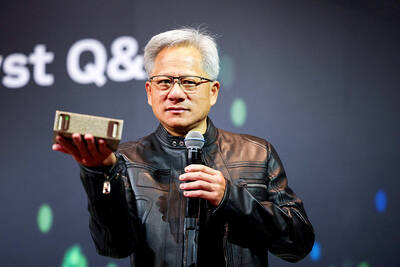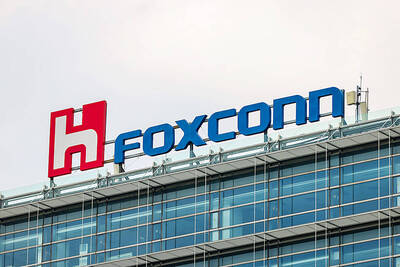The New York Times unveiled plans on Thursday to begin charging for full access to its Web site in a move that will be closely watched by other newspapers looking to boost online revenue.
The Times will offer readers 20 free articles a month at NYTimes.com before they will be asked to sign on to one of three digital subscription plans that cost from US$15 to US$35 a month.
Arthur Sulzberger, the Times publisher, announced the long-awaited move to a digital subscription model in a letter to readers published at NYTimes.com, the top US newspaper site with more than 30 million unique visitors a month.
Sulzberger said digital subscriptions will begin on Thursday in Canada to “fine-tune the customer experience” and will be extended to the United States and the rest of the world on March 28.
He said home delivery subscribers to the print edition of the Times and the International Herald Tribune, a Paris-based Times Co newspaper, will have full and free access to NYTimes.com.
Unlimited access to NYTimes.com and the newspaper’s smartphone application will cost US$15 for four weeks, while full access to the Web site and a tablet computer application will cost US$20 for four weeks. Full access to NYTimes.com and both smartphone and tablet applications is US$35 for four weeks.
Digital subscriptions can be purchased online through NYTimes.com and will be available through Apple’s iTunes by June 30.
Like other US newspapers, the Times has been struggling with declining print advertising revenue, falling circulation and the migration of readers to free news online.
The Times abandoned a previous effort to charge online called Times Select in 2007 after a two-year experiment.
The News Corp-owned Wall Street Journal is currently the only major US newspaper charging readers for unlimited access to its Web site and other US publishers have been waiting for the Times to unveil its online plan.
Britain’s Financial Times also charges for full online access and the managing director of FT.com, Rob Grimshaw, told reporters on Thursday that it has 210,000 digital subscribers, just over half its print circulation.
The Wall Street Journal’s basic for WSJ.com is US$103 a year while the Financial Times charges US$249 a year for a standard FT.com subscription.
Many US newspaper publishers have been reluctant to erect pay walls around their Web sites out of fear that it will result in a loss of traffic and online advertising revenue.
However, Grimshaw said the “metered model” used by the Financial Times and now adopted by the New York Times can work for “quality publishers.”
“We feel this is an approach and a model that can work very well for quality publishers, not just in terms of niche content like business and finance news, but also for high-quality general news,” he said.
“If it’s high-quality content, if it’s unique, if it’s differentiated, then it’s valuable to people and if it’s valuable people will be prepared to pay,” he said.
Dan Kennedy, a professor of journalism at Boston’s Northeastern University, said the Times was taking a “smart and nuanced approach to the problem of how do you get heavy users of your online content to pay while continuing to be part of the free conversation that’s taking place around your news.”
Kennedy said the Times, however, is “not a very good test case for the news business as a whole” because the newspaper is “so unique.”
“I really do think there’s a huge base of people out there who are willing to pay for the Times and pretty much nothing else,” he said.
The Times said the NYTimes.com home page and section fronts will remain free to browse and the Top News section on smartphone and tablet applications will also be free of charge.
Web users who find articles through links from Internet search, blogs and social media like Facebook and Twitter will be able to read those articles “even if they have reached their monthly reading limit,” it said.
There will be a five-article a day limit, however, of free links to articles to readers who visit NYTimes.com from Google.

SEEKING CLARITY: Washington should not adopt measures that create uncertainties for ‘existing semiconductor investments,’ TSMC said referring to its US$165 billion in the US Taiwan Semiconductor Manufacturing Co (TSMC, 台積電) told the US that any future tariffs on Taiwanese semiconductors could reduce demand for chips and derail its pledge to increase its investment in Arizona. “New import restrictions could jeopardize current US leadership in the competitive technology industry and create uncertainties for many committed semiconductor capital projects in the US, including TSMC Arizona’s significant investment plan in Phoenix,” the chipmaker wrote in a letter to the US Department of Commerce. TSMC issued the warning in response to a solicitation for comments by the department on a possible tariff on semiconductor imports by US President Donald Trump’s

‘FAILED EXPORT CONTROLS’: Jensen Huang said that Washington should maximize the speed of AI diffusion, because not doing so would give competitors an advantage Nvidia Corp cofounder and chief executive officer Jensen Huang (黃仁勳) yesterday criticized the US government’s restrictions on exports of artificial intelligence (AI) chips to China, saying that the policy was a failure and would only spur China to accelerate AI development. The export controls gave China the spirit, motivation and government support to accelerate AI development, Huang told reporters at the Computex trade show in Taipei. The competition in China is already intense, given its strong software capabilities, extensive technology ecosystems and work efficiency, he said. “All in all, the export controls were a failure. The facts would suggest it,” he said. “The US

The government has launched a three-pronged strategy to attract local and international talent, aiming to position Taiwan as a new global hub following Nvidia Corp’s announcement that it has chosen Taipei as the site of its Taiwan headquarters. Nvidia cofounder and CEO Jensen Huang (黃仁勳) on Monday last week announced during his keynote speech at the Computex trade show in Taipei that the Nvidia Constellation, the company’s planned Taiwan headquarters, would be located in the Beitou-Shilin Technology Park (北投士林科技園區) in Taipei. Huang’s decision to establish a base in Taiwan is “primarily due to Taiwan’s talent pool and its strength in the semiconductor

French President Emmanuel Macron has expressed gratitude to Hon Hai Precision Industry Co (鴻海精密) for its plan to invest approximately 250 million euros (US$278 million) in a joint venture in France focused on the semiconductor and space industries. On his official X account on Tuesday, Macron thanked Hon Hai, also known globally as Foxconn Technology Group (富士康科技集團), for its investment projects announced at Choose France, a flagship economic summit held on Monday to attract foreign investment. In the post, Macron included a GIF displaying the national flag of the Republic of China (Taiwan), as he did for other foreign investors, including China-based